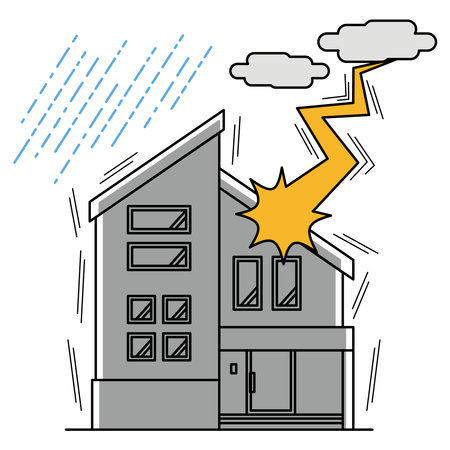1. Importance of Seasonal Safety Checks
As the seasons change, especially heading into the colder months, it’s essential to take time for a seasonal safety check in your home. These checks help ensure your family’s safety when heating systems are used more frequently and windows stay shut, reducing ventilation. Smoke detectors, carbon monoxide (CO) monitors, and emergency plans play a big role in keeping everyone safe during this time.
Why Cold Weather Calls for Extra Caution
During fall and winter, the use of furnaces, fireplaces, space heaters, and other heating appliances increases significantly. While they keep us warm and comfortable, they also come with higher risks of fire and carbon monoxide exposure. That’s why a proactive approach—checking your home’s safety devices each season—can prevent accidents before they happen.
Main Risks During Colder Months
| Risk | Description |
|---|---|
| Fire Hazards | Increased use of heating equipment and holiday decorations raises the chance of house fires. |
| Carbon Monoxide Poisoning | Poor ventilation and malfunctioning heaters can cause dangerous CO buildup. |
| Lack of Emergency Preparedness | If you haven’t updated your emergency plans recently, you may not be ready to act quickly in an emergency. |
The Benefits of Regular Seasonal Inspections
A seasonal safety check ensures that all systems meant to protect you are working properly. This includes:
- Sensors that save lives: Making sure smoke detectors and CO monitors have fresh batteries and function as expected.
- A ready plan: Reviewing your family’s emergency evacuation plan so everyone knows what to do in case of fire or gas leak.
- A safer environment: Identifying potential hazards like blocked vents or outdated appliances before they become dangerous.
Your Home Safety To-Do List for Fall/Winter
| Seasonal Safety Checklist | |
|---|---|
| Test all smoke detectors and replace batteries if needed | ✓ |
| Check carbon monoxide monitors and replace any expired units | ✓ |
| Clean or inspect your furnace and chimney systems | ✓ |
| Create or update a family emergency plan with clear escape routes | ✓ |
| Ensure all heaters are at least 3 feet away from flammable items | ✓ |
| Add reflective numbers to your mailbox for easy identification by first responders | ✓ |
Taking just a few hours each season to go through these checks can bring peace of mind throughout the colder months. It’s all about being prepared so you can focus on enjoying the season safely with your loved ones.
2. Inspecting and Testing Smoke Detectors
Making sure your smoke detectors are working properly is one of the most important steps you can take to keep your home safe. Here’s a simple guide to help you inspect, test, and maintain your smoke alarms throughout the year.
How to Test Your Smoke Alarms
Testing your smoke detectors is quick and easy. Follow these steps at least once a month:
- Press and hold the test button on the unit until you hear a loud siren. This sound means the alarm is functioning correctly.
- If there’s no sound or its weak, replace the batteries or the unit if needed.
- Have someone stand in a far room to make sure the alarm can be heard throughout your home.
When and How to Change Batteries
Even if your smoke detector seems fine, it’s important to change the batteries regularly. Use this table as a quick reference:
| Type of Detector | Battery Type | Recommended Battery Change Frequency |
|---|---|---|
| Standard 9V Battery Units | 9-Volt Alkaline | Every 6-12 Months |
| 10-Year Sealed Battery Units | Built-in Lithium | No battery change needed; replace entire unit after 10 years |
A good habit is to change batteries when daylight saving time begins and ends—twice a year.
Proper Placement of Smoke Detectors
The right location makes all the difference. Here are some tips for placing smoke alarms effectively:
- Install one on every level of your home, including the basement.
- Place one inside each bedroom and outside sleeping areas (like hallways).
- Avoid installing near windows, doors, or ducts where drafts might interfere with operation.
- Mount them on ceilings, at least 4 inches away from walls. If mounted on walls, place them 4–12 inches from the ceiling.
Quick Placement Guide by Room
| Room/Area | Smoke Alarm Needed? |
|---|---|
| Living Room | Yes |
| Kitchens* | No (but nearby) |
| Bedrooms | Yes |
| Hallways Outside Bedrooms | Yes |
| Basement | Yes |
*Avoid placing detectors directly in kitchens to prevent false alarms from cooking smoke. Instead, install them at least 10 feet away from cooking appliances.
![]()
3. Carbon Monoxide Detector Maintenance
Carbon monoxide (CO) is a colorless, odorless gas that can be deadly if not detected early. It’s produced by fuel-burning appliances like furnaces, water heaters, fireplaces, and stoves. Because its impossible to detect without proper equipment, having working CO detectors in your home is essential for your familys safety—especially as we move through different seasons when heating systems are used more frequently.
Understanding the Risks of Carbon Monoxide
Exposure to carbon monoxide can cause symptoms like headaches, dizziness, nausea, confusion, and even death. Since it’s undetectable by human senses, a CO detector is the only reliable way to know if this dangerous gas is present in your home.
How to Test Your CO Detectors
Just like smoke detectors, CO monitors should be tested monthly to ensure they’re working properly. Most models have a “Test” button. Press and hold it until you hear a loud beep or series of beeps. If there’s no sound or it’s weak, replace the batteries or the entire unit if needed.
Steps to Test Your CO Monitor:
- Press and hold the “Test” button on the device.
- Listen for the alarm sound; it should be loud and clear.
- If there’s no sound or its faint, replace batteries or check the power source.
- If issues persist, consider replacing the unit entirely.
Check Expiration Dates
Many people don’t realize that CO detectors have a lifespan—typically 5 to 7 years depending on the model. Check the back or side of your unit for a manufacture date or expiration label. If it’s past its prime, it won’t reliably detect carbon monoxide and should be replaced immediately.
Typical Lifespan of CO Detectors:
| Brand/Model Type | Lifespan |
|---|---|
| Kidde Plug-In CO Detector | 7 years |
| First Alert Battery-Powered CO Alarm | 5–7 years |
| Nest Protect (Smart CO Detector) | 10 years |
Where to Install CO Detectors According to U.S. Safety Standards
The National Fire Protection Association (NFPA) recommends installing carbon monoxide detectors:
- On every level of your home, including the basement.
- Outside each sleeping area, so alarms are heard easily at night.
- No more than 10 feet from bedrooms.
- Avoid placing them near fuel-burning appliances, which could cause false alarms.
- Avoid humid areas like bathrooms, which might affect sensor performance.
A good rule of thumb: if you can’t decide where to place it, think about where your family spends time sleeping or relaxing—those are key areas where early detection matters most.
Regular maintenance and proper placement of carbon monoxide detectors can literally save lives. Taking a few minutes each season to check your devices ensures they’ll work when you need them most.
4. Creating and Practicing an Emergency Plan
Having working smoke detectors and carbon monoxide monitors is important, but knowing what to do when an alarm goes off is just as critical. Every household should have a clear, easy-to-follow emergency plan that all family members understand. Here’s how you can create one:
Step 1: Identify Escape Routes
Walk through your home and identify at least two ways out of each room, usually a door and a window. Make sure these exits are not blocked and can be opened easily.
Example Escape Route Table
| Room | Main Exit | Secondary Exit |
|---|---|---|
| Master Bedroom | Main Door to Hallway | Window Facing Backyard |
| Kids Bedroom | Main Door to Hallway | Window with Fire Escape Ladder |
| Living Room | Main Front Door | Sliding Glass Door to Patio |
Step 2: Choose a Family Meeting Point
Select a safe place outside your home where everyone will meet after escaping. This could be the mailbox, a big tree at the corner, or a neighbor’s front yard. The meeting point should be far enough from the house to avoid danger, but close enough for young children to reach safely.
Step 3: Assign Responsibilities
If you have kids, seniors, or pets in your home, assign specific roles to adults or older teens. For example, one person may help grandma while another grabs the emergency go-bag or calls 911 once safe.
Step 4: Practice Regular Fire Drills
You should run practice drills at least twice a year. Try practicing during both day and night times so everyone knows what to do even when it’s dark or youre asleep. Make it fun for kids by turning it into a game—see who can get out the fastest safely!
Fire Drill Checklist:
- Test alarms: Start the drill by sounding the smoke detector (use the test button).
- Crawl low under smoke: Practice staying below “smoke level” by crawling on hands and knees.
- No stopping: Remind everyone not to stop for toys, phones, or pets—just get out safely first.
- Meet outside: Go directly to your meeting spot and do a headcount.
- No re-entry: Never go back inside until firefighters say it’s safe.
An effective emergency plan saves lives. By preparing now and practicing regularly, your family will know exactly what to do in case of fire or carbon monoxide emergencies.
5. Seasonal HVAC and Appliance Safety Tips
As the weather gets colder, we rely more on our heating systems and seasonal appliances to stay warm and comfortable. But without regular maintenance and safety checks, these devices can become fire hazards or cause carbon monoxide (CO) leaks. Here are some simple safety tips to help you keep your home safe during the fall and winter months.
HVAC System Inspection
Your heating, ventilation, and air conditioning (HVAC) system should be inspected at least once a year—ideally before the cold season starts. A professional technician can check for gas leaks, blocked vents, dirty filters, and any malfunctioning parts that could lead to safety risks or reduce efficiency.
DIY HVAC Checklist:
| Task | Recommended Frequency |
|---|---|
| Replace air filters | Every 1–3 months |
| Check thermostat settings | Seasonally |
| Inspect air vents for blockages | Monthly |
| Clear debris around outdoor units | Quarterly |
Space Heater Safety
Space heaters are convenient but can be dangerous if not used properly. Always choose a model with an automatic shut-off feature in case it tips over. Place space heaters on flat, non-flammable surfaces and keep them at least three feet away from anything that can burn, such as curtains or bedding.
Quick Space Heater Safety Tips:
- Never leave a space heater unattended.
- Don’t use extension cords or power strips—plug directly into a wall outlet.
- Keep children and pets away from heaters.
- Turn off when leaving the room or going to sleep.
Gas Appliances & CO Risk Prevention
Gas furnaces, stoves, water heaters, and fireplaces can all produce carbon monoxide if they’re not working properly. Make sure each appliance is well-ventilated and serviced regularly. Install carbon monoxide detectors near sleeping areas and on every level of your home.
Signs Your Gas Appliance Needs Attention:
- Soot buildup around the appliance
- Pilot light frequently goes out or burns yellow instead of blue
- A lingering smell of gas (leave immediately and call your utility provider)
Professional Maintenance is Key
If youre unsure about how to inspect your systems or appliances safely, its always best to hire a licensed HVAC technician or appliance repair specialist. They have the tools and training to spot issues before they become serious problems. Investing in seasonal maintenance not only protects your family—it also helps your equipment last longer and run more efficiently.
Stay warm and safe this season by making these checks part of your annual home safety routine!


